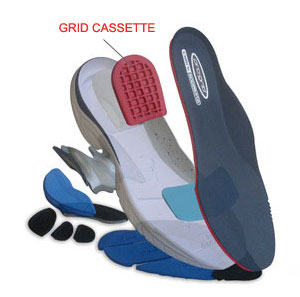Saucony Technology for Running Shoes
By shoesobsessions
Shoe Lasts:
As you may realize every single person has different shapes of feet that´s why Saucony has built several different shapes for their shoes. Women and men have different last as an example.
Saucony recognise that feet can be different shapes, and our shoes need to reflect this.
Standard Last:
Saucony’s classic semi-curved last, “the classic Saucony fit”. Some characteristics are that these shoes are wide in the forefoot, narrow in the heel able for every single runner.
Contour Last:
Saucony’s semi-curved last. The Contour Last offers a tapered and sculpted profile which provides an anatomically correct representation of the foot.
Modified Contour Last:
Saucony’s newest last. With all new technology for better grip and offering an anatomically shape to adapt to your feet.
Straight Last:
Saucony’s straight last is designed for runners with flatter feet while maintaining the fit and feel for which Saucony is known. Primarily found in Motion Control shoes that are designed to address extreme foot pronation.
Performance Last:
A curved last which allows fastest possible heel-to-toe transition.
GRID Technology:
The Grid technology is a woven configuration of Hytrel™ filaments which provide superior cushioning and stability by centring the heel when impacting the floor.
Saucony uses the GRID system because unlike other cushioning systems seen in technical running shoes, it offers stable cushioning. If you notice that when running the first part of the foot hitting the ground is the heel, so this is vital to the health of a runner due to the fact that when the heel touches the ground a force of up to three times body weight (3G) is generated. This force acts not only in the heel but also it is transmitted up the lower leg and into the back, affecting the ankle, knee and hip joints.
The GRID cassette fits into the rearfoot section of the midsole (as shown on picture below), as the impact occurs, the interwoven Hytrel strands bend to the shape of the heel, while the midsole compresses, thus providing cushioning.

Saucony GRID Technology
Which let this technology be one of the best for running is that the actual user is more in control of the cushioning movement. “GRID Technology = Controlled Cushioning”
Different GRID Techonolgies:
GRID: The Grid technology was introduced in 1991, a whole generation of runners has become addicted to this kind of shoes. It uses woven Hytrel™ filaments.The physics work a bit like a tennis racquet for a runner’s foot, absorbing and deflecting impacts and protecting the body from the force of the road.
PROGRID: The latest of all GRID techs, built closer to the foot, it provides greater cushioning without compromising support and durability. ProGrid is created with Respon-Tek™, our latest impact deflection technology, which is made from a blend of foams and synthetic rubbers.
3D GRID: Soft grade Hytrel™ filaments wrapped around the midsole form a platform for heel strike cushioning and shock absorption. On the 3D Grid Hurricane, the lateral strands of the 3D Grid are angled at 30° to optimize heel strike cushioning and reduce the rate of pronation. 90° strands on the medial side provide structural support and limit over-pronation.
I-GRID: The difference with this one is that is built with EVA. I-Grid is a super-lightweight cushioning system used in our lightest racing shoes.
Active GRID Cushioning: Active Grid is a further development of Saucony’s premier cushioning technology. The Hytrel strands are arranged in a Vector Shape which provides hinge-like compression whilst the softer material allows for shock attenuation. By gradiating the angle of the strands a smooth and controlled transition from heel strike is provided along with some gentle pronation control.
FleXion Plate:
The Flexion Plate technology allows the runner to move from the heel to the forefoot as efficiently as
The Flexion Plate is a TPU based structure that guides the foot from heel strike to forefoot letting the runner up onto their toes as quickly as possible. The Flexion Plate creates a platform which cushions and controls but does not allow as much deflection into the midsole. By promoting forward direction, and disallowing injury-encouraging, energy wasting lateral motion, the transition to the forefoot occurs without using as much energy as a typical high cushion, low response running shoe.
Ionic Cushioning System: (ICS)
In some Saucony shoes, you’ll find the famous Ionic Cushioning System, or I.C.S. Another important Saucony innovation that contributes substantially to comfort and control, it is composed of moulded triangular pillars at the rear of the midsole and provides additional cushioning for the heel-strike phase of each running stride.
No comments:
Post a Comment